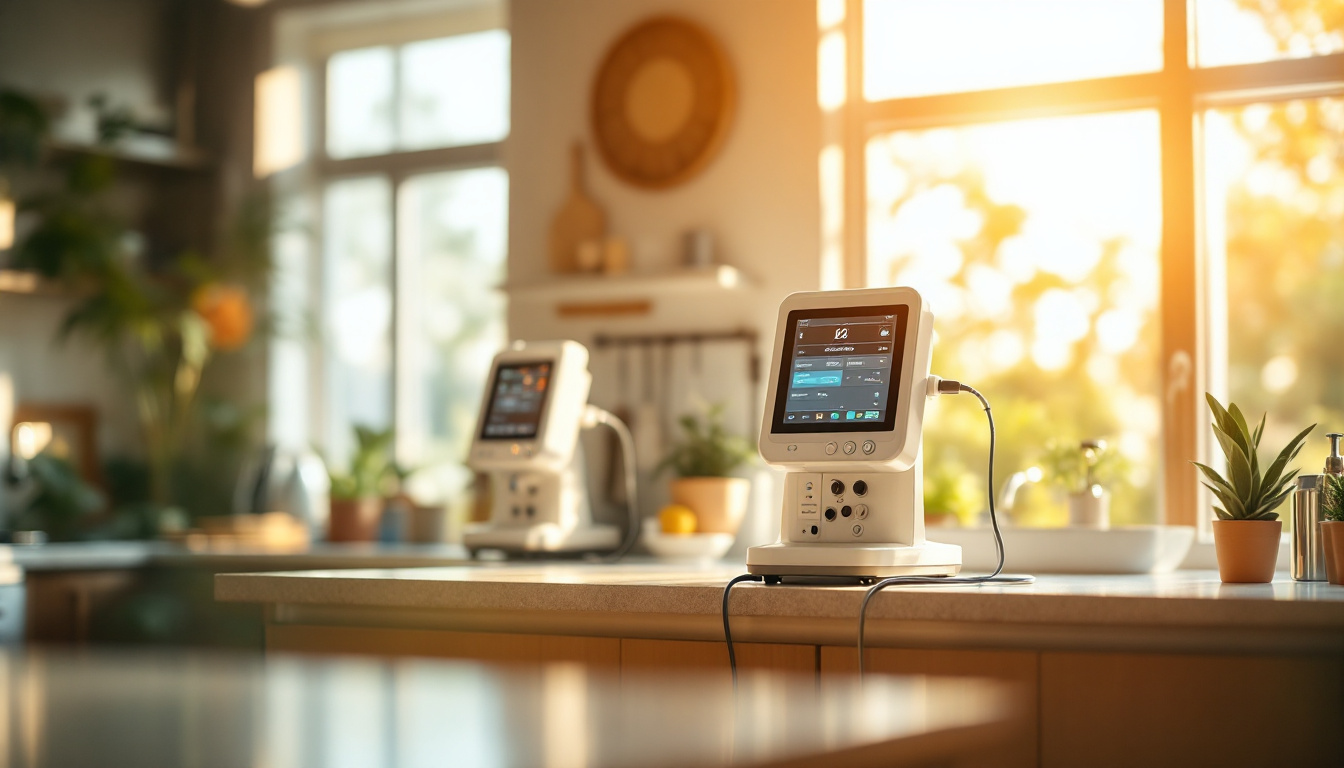How are patient medications tailored through sterile compounding?

Introduction to Sterile Compounding
Sterile compounding is a vital pharmaceutical practice that tailors medications to meet the unique needs of individual patients. Focusing on creating injectable, implant, and ophthalmic medications in a meticulously controlled environment, this process addresses critical gaps in standard medication offerings. As pharmaceutical compounding evolves, it is increasingly recognized for its role in delivering personalized healthcare solutions, adapting to allergies, ingredient sensitivities, and unique patient requirements.
Detailed Process of Sterile Compounding

What is the sterile compounding process?
The sterile compounding process involves preparing drug formulations in a controlled clean-room environment using strict aseptic techniques to ensure that the preparations are free from microorganisms. This is critical for medications intended for injection, implantation, or ophthalmic use, which are tailored to meet the specific needs of patients.
Licensed pharmacists or physicians oversee the compounding, particularly for those patients who cannot use standard FDA-approved drugs due to allergies or specific medical conditions. This personalized approach is essential for vulnerable populations, such as pediatric patients, geriatric patients, and those nearing the end of life.
Controlled clean-room environment
Sterile compounding is performed in clean-room facilities designed to maintain ISO Class 5 standards, ensuring the highest air quality and minimizing contamination risks. These environments are equipped with specialized equipment and undergo rigorous environmental monitoring to confirm compliance with safety protocols.
Aseptic techniques
In order to maintain sterility, practitioners must follow strict aseptic techniques throughout the compounding process. This includes:
- Thorough handwashing and wearing protective gear: Ensures personnel do not introduce contaminants.
- Regular cleaning and certification of the workspace: To maintain a contamination-free environment.
- Use of advanced equipment: Such as Primary Engineering Controls (PECs) for air filtration and circulation.
Types of medications involved
The sterile compounding process is primarily used to create:
| Type of Medication | Examples | Purpose |
|---|---|---|
| Injectable medications | Pain relief injections | Ensure precise dosage for effective treatment |
| Implantable medications | Hormone pellets | Customized formulations for individual hormonal needs |
| Ophthalmic medications | Eye drops | Tailored solutions for patients with sensitivities |
The compounding of these medications not only addresses individual patient requirements but also fills gaps in availability during drug shortages.
The Compounding Journey: Step-by-Step Process
What are the general steps in the compounding process?
The compounding process is a meticulous endeavor, ensuring customized medications are both safe and effective. It typically begins with prescription verification. Pharmacists receive the prescription and check for completeness and authenticity. If any details are unclear or missing, they will reach out to the prescribing doctor or the patient for clarification.
Next is the critical phase of drug dosage calculations. During this step, pharmacists calculate the necessary doses, making sure to check for any potential drug interactions. They determine the precise amounts of active ingredients and excipients needed to create the medication tailored to the patient's specific requirements.
Once calculations are completed, the actual compounding occurs. This involves preparing the medication according to established formulas, following strict protocols that adhere to regulatory standards set by organizations like the United States Pharmacopeia (USP).
Finally, before dispensing the compounded medication, comprehensive final checks are performed. This includes verifying all preparations are accurate, ensuring thorough documentation, and addressing any potential compatibility issues that may arise. By following these steps carefully, pharmacies aim to provide safe and effective customized medications for patients.
Understanding the Art and Science of Compounding
How are medications compounded?
Compounding is the process through which licensed pharmacists or physicians tailor medications to meet individual patient needs by combining, mixing, or altering drug ingredients. This meticulous practice begins with a prescriber identifying specific patient requirements, including active ingredients, dosage forms, and necessary modifications to avoid allergens.
It's important to note that compounded drugs are not approved by the FDA, which means their safety, effectiveness, and quality are not verified before they enter the market. Although compounding practices fall under the purview of federal guidelines established by the Drug Quality and Security Act (DQSA), the oversight largely relies on state boards of pharmacy.
The compounding process can occur in various settings, including traditional pharmacies or specialized outsourcing facilities. Notably, these facilities must comply with current good manufacturing practices (CGMP) to ensure quality control.
What are the risks in compounding?
While compounded medications can be beneficial for those with unique health considerations, they come with significant risks. The absence of FDA approval raises concerns regarding potential contamination, incorrect dosages, or the use of improper ingredients. Because of these risks, it's vital for healthcare professionals to adhere to strict protocols when preparing compounded medications and for patients to understand the importance of choosing reputable pharmacists or pharmacies.
By ensuring adherence to established protocols and guidelines, practitioners can help mitigate these risks, contributing to safer, effective compounding practices.
Pharmacists: The Architects of Personalized Medicine
What role do pharmacists play in the customized medication preparation process?
Pharmacists are essential players in the realm of personalized medicine. They leverage their expertise to compound medications tailored to the unique needs of individual patients. This process demands careful formulation, ensuring that each medication adheres to safety and efficacy standards.
In addition to compounding, pharmacists engage in medication therapy management (MTM) services. Through in-depth consultations, they help prevent adverse drug events and promote adherence to prescribed regimens. By collaborating closely with healthcare providers, pharmacists actively monitor for potential drug interactions, which is critical for patient safety.
Furthermore, pharmacists involved in research play a strategic role in clinical trials. They ensure that experimental treatments are prepared accurately and administered safely, thereby contributing to advancements in therapeutic options.
Through these multifaceted responsibilities, pharmacists not only enhance the quality of patient care but also solidify their position as vital contributors to personalized medicine.
How do pharmacists collaborate with healthcare providers?
Collaboration among pharmacists and healthcare providers is crucial for ensuring optimal patient outcomes. By working together, they can assess the specific needs of patients who might require customized medications due to allergies, absentee formulations, or unique dosage requirements. This synergy enhances the decision-making process, allowing for timely adjustments based on the patient's health status and response to treatment.
What role does patient education play in the compounding process?
Patient education is a cornerstone of the compounding process. Pharmacists provide essential guidance to patients on how to properly use their customized medications, discuss potential side effects, and highlight the importance of adherence. By addressing patients' concerns and ensuring they understand their treatment, pharmacists empower individuals to take an active role in managing their health.
Handling Hazardous Drugs: Safety in Sterile Compounding
What are the requirements for compounding sterile HD drugs?
Compounding sterile hazardous drugs (HDs) necessitates rigorous safety measures to minimize risks to healthcare personnel and patients. This includes carrying out compounding in designated controlled environments, specifically utilizing containment primary engineering controls (C-PEC) such as Class II or III Biological Safety Cabinets or Compounding Aseptic Containment Isolators that provide at least ISO Class 5 air quality.
Key Elements of HD Compounding Safety
- Updated Hazardous Drug List: It is essential to maintain and annually review an updated list of hazardous drugs based on National Institute for Occupational Safety and Health (NIOSH) criteria.
- Personal Protective Equipment (PPE): Proper training on the appropriate use of PPE and safety practices is crucial for all personnel involved in compounding.
- Engineering Controls: Facilities must implement engineering controls that include routine deactivation, decontamination procedures, and extensive environmental monitoring to ensure safety and compliance with established standards.
- Hazard Communication Program: An effective communication program regarding the hazards of the drugs must be in place to inform all personnel.
- Medical Surveillance Programs: These programs help monitor potential health effects on healthcare workers who handle hazardous substances, enhancing overall safety.
USP General Chapter <800> Guidelines
The Uniformed Services University of the Health Sciences (USP) General Chapter <800>, effective November 1, 2023, sets forth specific standards aimed at improving handling practices for hazardous drugs. These guidelines ensure comprehensive safety for healthcare professionals, patients, and the environment by mandating strict protocols for HD compounding.
Sterile Compounding: A Lifeline for Allergy-Sensitive Patients

How does sterile compounding benefit patients with unique needs such as allergies and ingredient sensitivities?
Sterile compounding serves as a vital resource for individuals with unique medical needs, particularly those with allergies and sensitivities to certain ingredients. Pharmacists can create personalized medications that are carefully tailored to avoid problematic allergens. This customization minimizes potential adverse reactions, which is crucial for enhancing patient safety and ensuring effective treatment.
Moreover, sterile compounding allows for modifications in dosage forms. For instance, medications can be transformed into easier-to-administer forms like liquids or topical gels, which is especially beneficial for patients who struggle with swallowing pills. By providing these alternative formulations, compounded medications not only boost adherence but also improve overall treatment outcomes.
In sterile compounding, pharmacists meticulously assess each patient's requirements. This process includes selecting appropriate active ingredients, customizing strengths, and removing allergens to cater to specific health needs. The meticulous approach not only ensures safety but also strengthens the effectiveness of the therapy for patients with complex health issues.
Additional Benefits of Sterile Compounding
In addition to addressing allergies, sterile compounding provides precise control over medication dosages and can combine multiple therapeutic agents for chronic conditions. This versatility ultimately leads to better management of healthcare costs and improved quality of life for patients.
In summary, sterile compounding not only tailors pharmaceutical preparations to meet individual needs but also plays an essential role in ensuring safe and effective therapies for allergy-sensitive patients.
Maintaining Top-notch Standards in Compounding

What guidelines and standards ensure quality and safety in compounding practices?
Quality and safety in compounding practices are primarily upheld by adhering to guidelines set by the United States Pharmacopeia (USP). These include chapters <795> for non-sterile preparations, <797> for sterile preparations, and <800> for hazardous drug handling. Each chapter provides detailed procedural and safety standards to help pharmacists ensure high-quality medications.
In addition to USP guidelines, they develop Monographs that specify standards for both bulk drug substances and compounded preparations. These documents govern the active ingredients and formulations necessary for compounded medications, ensuring that they meet safety and efficacy benchmarks.
Regulatory compliance is further reinforced by the Food, Drug, and Cosmetic Act (FDCA) and the 2013 Drug Quality and Security Act (DQSA). Both acts emphasize the critical role of these standards in maintaining drug safety in compounding practices.
Why is training and monitoring important in compounding?
Ongoing training and competency assessments of compounding personnel are vital for maintaining high standards in medication preparation. Continuous education ensures that pharmacists and technicians keep up with current best practices and safety protocols.
Environmental monitoring also plays a crucial role. Regular tests of air quality and surface cleanliness, as well as compliance with standards like USP 797, safeguard against contaminants that could compromise patient safety.
Furthermore, the dual oversight from state pharmacy boards and the FDA for outsourcing facilities reflects a strong commitment to upholding rigorous standards in compounding environments. This oversight helps ensure that compounded medications are safe, effective, and tailored to meet individual patient needs, responding effectively to the evolving healthcare landscape.
Sterile Compounding: Essential Benefits and Future Directions

Role in Meeting Drug Shortages
Sterile compounding plays a crucial role in addressing drug shortages, which can disrupt patient treatments. Compounding pharmacies can replicate medications when commercially available options are unavailable, ensuring that patients continue to receive necessary therapies without interruption. This flexibility helps maintain consistent patient care, particularly for those with chronic conditions that require ongoing medication.
Emerging Technologies
Technological advancements are enhancing sterile compounding processes significantly. The adoption of robotic automation improves accuracy and consistency in medication preparation, while closed system transfer devices (CSTDs) minimize contamination risks. Additionally, real-time monitoring technologies provide immediate alerts for any deviations from critical environmental standards, ensuring the integrity of compounded sterile preparations.
Impact on Healthcare Costs
By enabling personalized medication solutions that cater to individual patient needs, sterile compounding may lead to reduced healthcare costs. Custom formulations can improve medication adherence and potentially decrease the number of medications required for patients, particularly those managing chronic conditions. Tailored medications can enhance treatment effectiveness and improve patient outcomes, ultimately impacting healthcare expenditure positively.
| Topic | Description | Benefits |
|---|---|---|
| Role in Meeting Drug Shortages | Addresses gaps in medication availability | Continuity of care for patients needing ongoing treatments |
| Emerging Technologies | Enhancements in compounding processes | Improved accuracy, reduced contamination risks, and real-time monitoring |
| Impact on Healthcare Costs | Personalized solutions for patients | Increased adherence, reduced number of medications, and improved overall patient outcomes |
The Future of Patient-Centric Medication
Sterile compounding exemplifies the integration of precision, safety, and personalized medicine in the pharmaceutical industry. As patient needs continue to diversify, compounding offers unique solutions that commercial medications often cannot address. By leveraging technological advancements, improving regulatory frameworks, and ensuring rigorous training and standards, the practice of sterile compounding remains a crucial pillar in advancing healthcare and enhancing patient outcomes. Looking forward, the focus on patient-centric care and medication safety will guide the expansion and innovation of compounding practices, making personalized mediations more accessible and safer for all patients.
References
- An Overview of Compounding - The Clinical Utility of ... - NCBI
- Compounding and the FDA: Questions and Answers
- Sterile Compounding - CompleteRx
- Human Drug Compounding - FDA
- [PDF] Ensuring Patient Safety in Compounding of Medicines
- [PDF] ASHP Guidelines on Compounding Sterile Preparations
- Inside a Compounding Pharmacy: A Behind-the-Scenes Look
- Understanding the Basics of Pharmaceutical Compounding



































































































